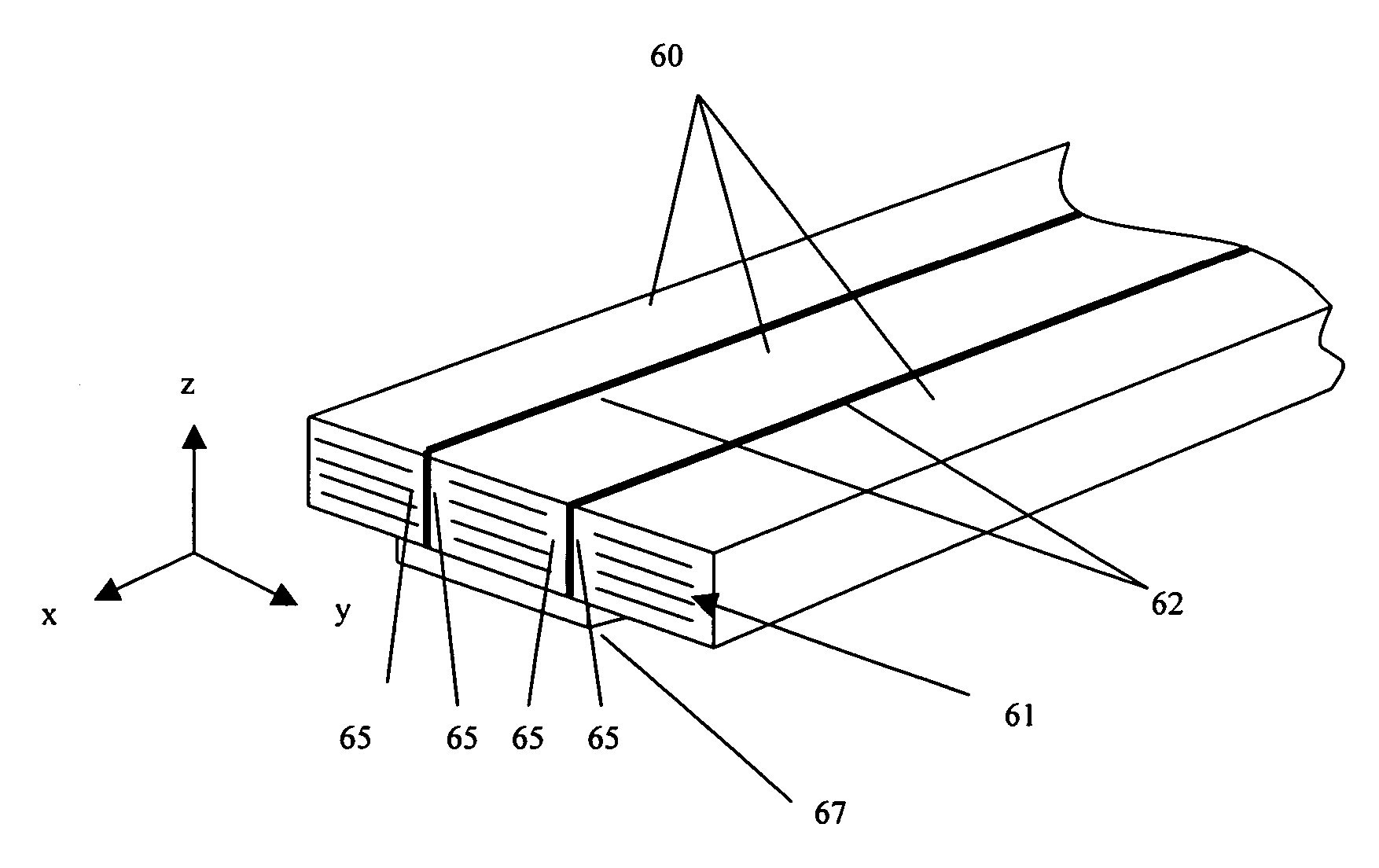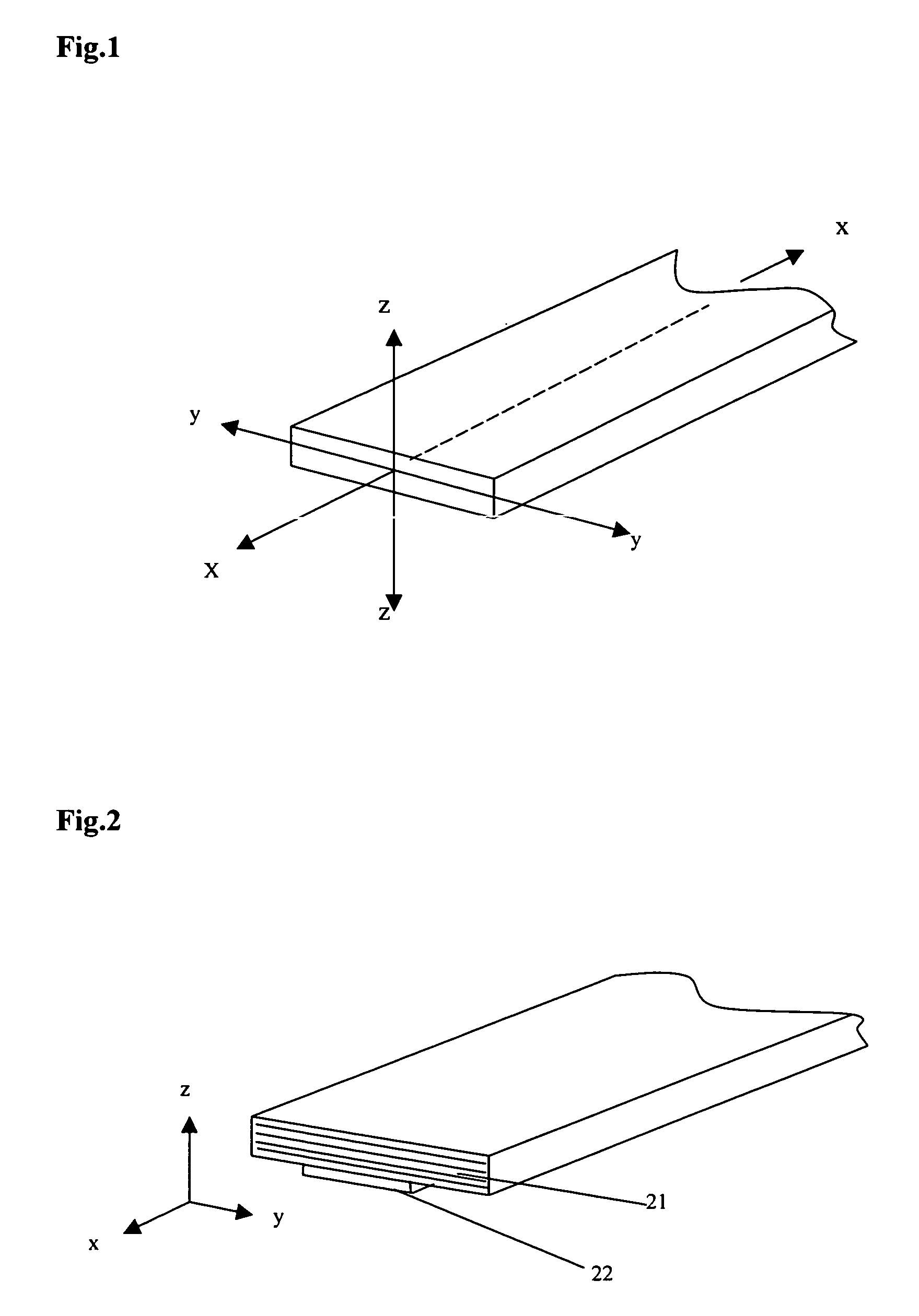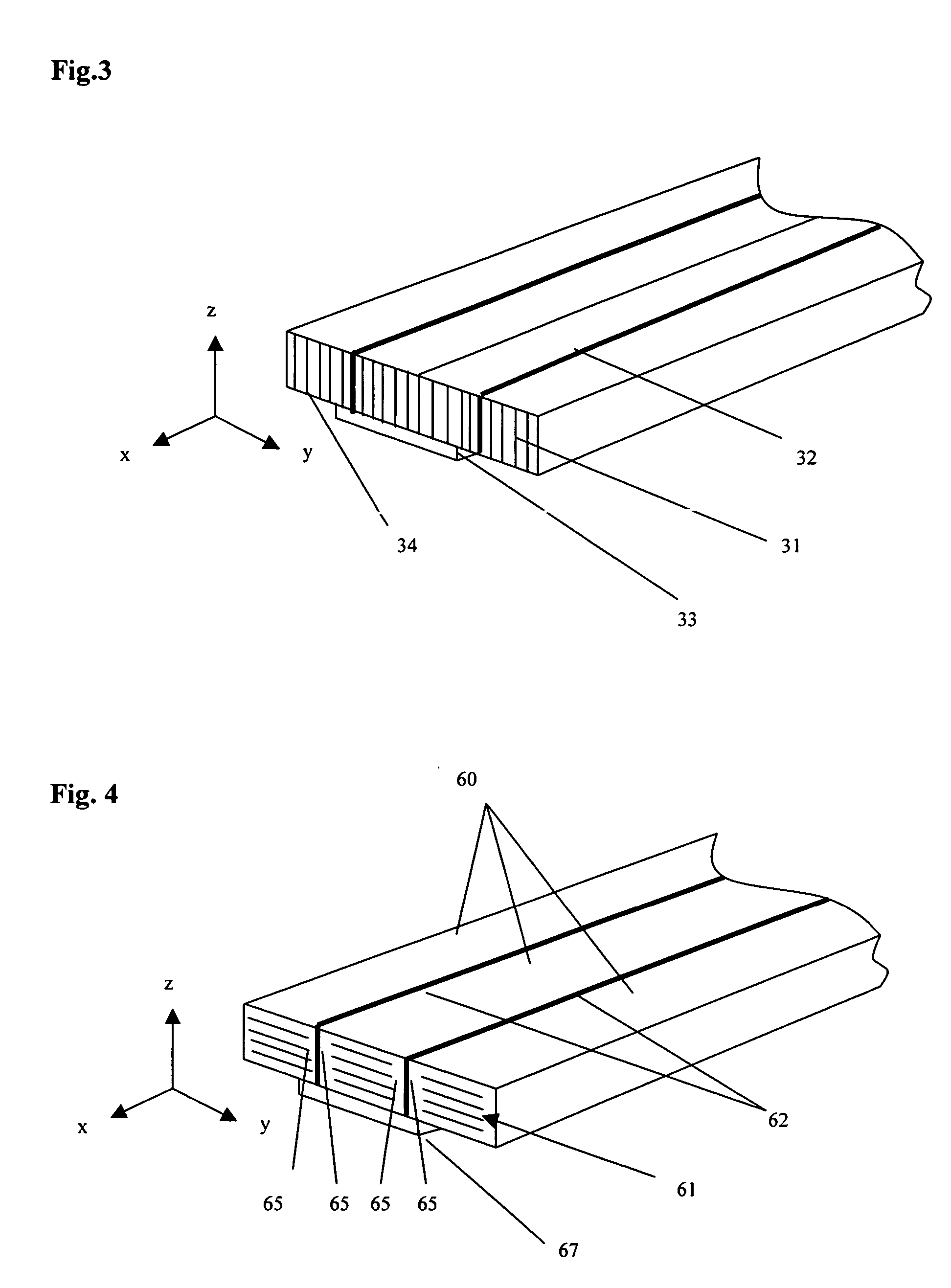Low stress to seal expanded PTFE gasket tape
a gasket tape and expansion technology, applied in the field of gaskets, can solve the problems of large amount of unevenness or lack of flatness associated with the flange, non-expanded, non-porous ptfe gaskets are generally not conformable enough to effectively seal this type of equipment, etc., and achieve the effect of reducing tensile strength
- Summary
- Abstract
- Description
- Claims
- Application Information
AI Technical Summary
Benefits of technology
Problems solved by technology
Method used
Image
Examples
example 1
[0065] An ePTFE / FEP composite form-in-place gasket of the present invention was produced in the following manner.
[0066] A length of GORE-TEX® Series 600 Gasket Tape (ePTFE tape) having a nominal width of approximately 20 mm (0.79 inches) and a nominal thickness of approximately 6 mm (0.25 inches) was obtained from W.L. Gore & Associates, Inc. of Newark, Del. The GORE-TEX® Series 600 Gasket Tape is comprised of a plurality of a biaxially expanded PTFE layers laminated in the z-axis having tensile strength in the longitudinal α-axis) and transverse (y-axis) directions as taught in U.S. Pat. No. 5,964,465 to Mills et al.
[0067] A Teflon® FEP Film, Type A having a width of approximately 13 mm (0.5 inches) and a thickness of approximately 0.025 mm (0.001 inches), was obtained from E.I. du Pont de Nemours, Inc. of Wilmington, Del.
[0068] The FEP film was melt bonded to one side surface of the ePTFE tape along the length (x-z plane) using a hot press substantially similar to the press sho...
example 2
[0072] An ePTFE / FEP composite form-in-place gasket of the present invention was produced substantially according to the method described in Example 1. The welded tape was trimmed to a final width of about 20.4 mm (0.803 inches) with the FEP layer centered between the two side edges of the welded tape, and the final thickness was about 5.6 mm (0.221 inches). A double-sided pressure sensitive adhesive having a width of about 10 mm was applied to one surface of the tape along the length of the tape and centered between the two edges of the welded tape. The pressure sensitive adhesive was a styrene butadiene rubber (SBR) based adhesive with a polyester carrier film and with a release paper on one side.
[0073] The welded tape made according to this example was formed into a gasket and tested for sealability in accordance with the procedures of the Sealability Test. The results can be found in FIG. 14.
example 3
[0074] An ePTFE / FEP composite form-in-place gasket of the present invention was produced substantially according to the method described in Example 1. The welded tape was trimmed to a final width of about 20.8 mm (0.817 inches) with the FEP layer centered between the two side edges of the welded tape, and the final thickness was about 5.6 mm (0.222 inches). A double-sided pressure sensitive adhesive having a width of about 10 mm was applied to one surface of the welded tape along the length of the tape and centered between the two side edges. The pressure sensitive adhesive was a styrene butadiene rubber (SBR) based adhesive with a polyester carrier film and with a release paper on one side. The welded tape made according to this example was formed into a gasket and tested for sealability in accordance with the procedures of the Sealability Test. The results can be found in FIG. 14.
PUM
| Property | Measurement | Unit |
|---|---|---|
| Fraction | aaaaa | aaaaa |
| Fraction | aaaaa | aaaaa |
| Fraction | aaaaa | aaaaa |
Abstract
Description
Claims
Application Information
 Login to View More
Login to View More - R&D
- Intellectual Property
- Life Sciences
- Materials
- Tech Scout
- Unparalleled Data Quality
- Higher Quality Content
- 60% Fewer Hallucinations
Browse by: Latest US Patents, China's latest patents, Technical Efficacy Thesaurus, Application Domain, Technology Topic, Popular Technical Reports.
© 2025 PatSnap. All rights reserved.Legal|Privacy policy|Modern Slavery Act Transparency Statement|Sitemap|About US| Contact US: help@patsnap.com



